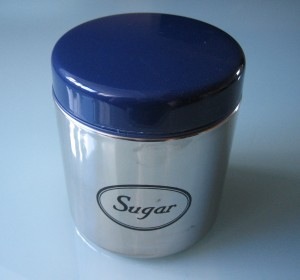 If you did, you’re not alone — actually you’ve got plenty of company!
If you did, you’re not alone — actually you’ve got plenty of company!
Our pizza eating habits are amazing. Whether we buy it fresh or frozen, by the slice or by the pie. We eat it for takeout or grabbed off of round metal trays plopped on formica tables. We eat it everywhere and by the ton.
- According to Domino’s, each person in North America eats 23 pounds of pizza a year
- Americans eat the equivalent of about 100 acres of pizza each day, or 350 slices per second
- Men, women, and children in America eat an average of 46 slices of pizza a year
- 93% of Americans eat pizza at least once a month
- Almost 70% of Superbowl watchers eat a slice (or two or three) during the game
So What’s The Problem?
For the most part: fat and calories. Sure, you may not like a particular type of pizza, or perhaps you love round pizzas rather than square ones. But, if your mouth has started to water at the thought of golden brown crust and cheesy goodness — here’s the downer: that luscious pizza can be a fat and calorie nightmare. Don’t despair. Here’s the good news: pizza can be a healthy food choice filled with complex carbs, B-vitamins, calcium, protein, vitamin A, and vitamin C and calorically okay if you choose wisely and don’t eat more than your fair share.
It’s difficult to estimate the number of calories and fat grams in a slice of pizza because the size and depth of the pies and the amount of cheese, meat, or other toppings varies so enormously – and, we all have our preferences..
How Many Calories?
The membership warehouse club Costco has 416 domestic locations, and most of them have a food court that sells pizza, making Costco the 15th largest pizza chain in the US. They serve a whole lot of pizza and a whole lot of calories. A single slice of Costco pizza is estimated to have 804 calories, 342 of them from from fat.
Mall pizza can be okay — and not okay. For instance, Sbarro’s Low Carb Cheese Pizza has 310 calories and 14 grams of fat. But, its Low Carb Sausage/Pepperoni Pizza has 560 calories and 35 grams of fat. A slice of the Fresh Tomato Pizza clocks in at 450 calories with 14 grams of fat. Any of Sbarro’s “Gourmet” pizzas have between 610 and 780 calories a slice and more than 20 grams of fat. “Stuffed” pizzas are even worse—790 calories minimum and over 33 grams of fat per slice.
Are You Craving Pizza?
Although we all have out own pizza preferences, the next time you order try some of these tricks to keep your choice on the healthy side:
- Order thin crust rather than thick doughy crust.
- Resist the urge to ask for double cheese.
- Pile on veggies like mushrooms, peppers, olives, tomatoes, onion, broccoli, spinach, asparagus. Some places have salad pizza – great if it’s not loaded with oil.
- Ask for your pizza to be cheeseless, made with low fat cheese, or “go light on the cheese, please” (no guarantee but it’s worth it to try).
- Instead of cheese go for big flavors: onion, garlic, olives (use them somewhat sparingly because of the oil but they’re a whole lot better than meat). And Don’t forget anchovies anyone (low in calories)! A lot of flavor for minimal calories – but you have to like them!
- Avoid meat toppers. Think about the fat content in sausage, pepperoni, and meatballs.
- Try to hold it to two slices of pizza and order a salad on the side.
- If you’re willing (and not embarrassed or grossed out), try blotting the free floating oil that sits on top of a greasy slice. Blotting (it’s easy to do this on the kind of hot slice where the oil runs down your arm) can soak up a teaspoon of oil worth 40 calories and 5 grams of fat.



